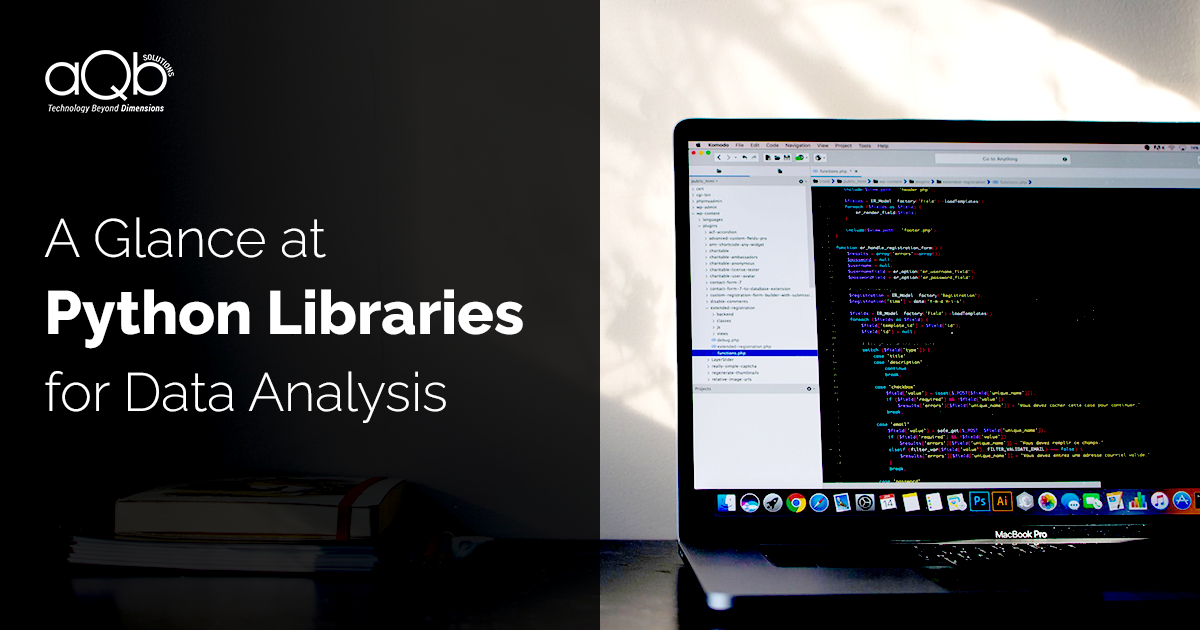Python has gained immense popularity as a general-purpose, high-level back-end programming language for the creation of the prototype and developing applications. Python’s readability, flexibility, and suitability to data analysis have made it one of the most preferred languages among developers.
- Numeric and Scientific Computation (NumPy and SciPy):
NumPy or Numeric and Scientific Computation laid the basic premises for scientific computing in Python and ranks among the top 10 Python Libraries for data analysis. It provides you with fast precompiled functions for mathematical and numerical routines. In addition, NumPy optimizes Python programming with powerful data structures for efficient computation of multi-dimensional arrays and matrices.
- PANDAS (Python Data Analysis Library):
PANDAS provide high-performance, easy-to-use data structures and data analysis tools for Python programming. It is used to add data structures and tools designed for practical data analysis in multiple streams such as finance, statistics, social sciences, and engineering. PANDAS is great for working with incomplete, unstructured, messy, and uncategorized data.
PANDAS comes with several unique features such as:
• PANDAS is capable of reshaping data structures
• It can label series and tabular data to facilitate automatic alignment of data
•PANDAS makes heterogeneous indexing of data along with systematic labeling simpler
•It is capable of identifying and fixing missing data
• PANDAS can load and save data from multiple formats
- Matplotlib:
Matplotlib is capable of producing publication quality figures in a wide variety of hardcopy formats and interactive environments across platforms. It is widely used in Python scripts, the Python and IPython shell, the jupyter notebook, web application servers, and four graphical user interface toolkits.
Matplotlib is highly recommended for generating plots, histograms, power spectra, bar charts, error charts, scatterplots, etc., with fewer codes.
For simple plotting, the pyplot module provides a MATLAB-like interface, particularly when combined with IPython. For the power user, the developer has full control of line styles, font properties, axes properties, through an object-oriented interface or through a set of functions familiar to MATLAB users.
- Tensorflow:
Tensor is Google Brain’s second-generation system. Written mostly written in C++, it includes the Python bindings; performance is not a matter of worry. Its flexible architecture allows developers to deploy it to one or more CPUs or GPUs in a desktop, server, or mobile device all with the same API. Tensorflow was developed for the Google Brain project and is now extensively used. However, you must dedicate some time to learn its API, but the time spent is worth it.
- Pybrain:
PyBrain, another top Python Library for data analysis, offers flexible, easy-to-use yet still powerful algorithms for Machine Learning Tasks and a variety of predefined environments to test and compare your algorithms. PyBrain has gained immense popularity as an easy-to-use modular library that can be used by entry-level students. It is popular because of the flexibility and algorithms for state-of-the-art research.
PyBrain, as its written-out name already suggests, contains algorithms for neural networks, for reinforcement learning (and the combination of the two), for unsupervised learning, and evolution.
- Shogun:
Shogun, one of the top Python Libraries for data analysis is focused on large-scale kernel methods. Initiated by Soeren Sonnenburg and Gunnar Raetsch in 1999, Shogun is currently under rapid development by a large team of programmers. This free and open source toolbox written in C++ provides algorithms and data structures for machine learning problems. Shogun Toolbox provides the use of a toolbox via a unified interface from C++, Python, Octave, R, Java, Lua and C++; and can run on Windows, Linux, and even MacOS. Shogun supports bindings to other machine learning libraries like LibSVM, LibLinear, SVMLight, LibOCAS, libqp, VowpalWabbit, Tapkee, SLEP, GPML and many more.
Some of the most well-known features include one-time classification, multi-class classification, regression, structured output learning, pre-processing, built-in model selection strategies, visualization and test frameworks; and semi-supervised, multi-task and large-scale learning.
Python libraries help developers simplify complex jobs and make data integration a simpler process with fewer codes and in lesser time. This article aims at exploring some of the top Python libraries for Data Science in 2019, and how to make them work

